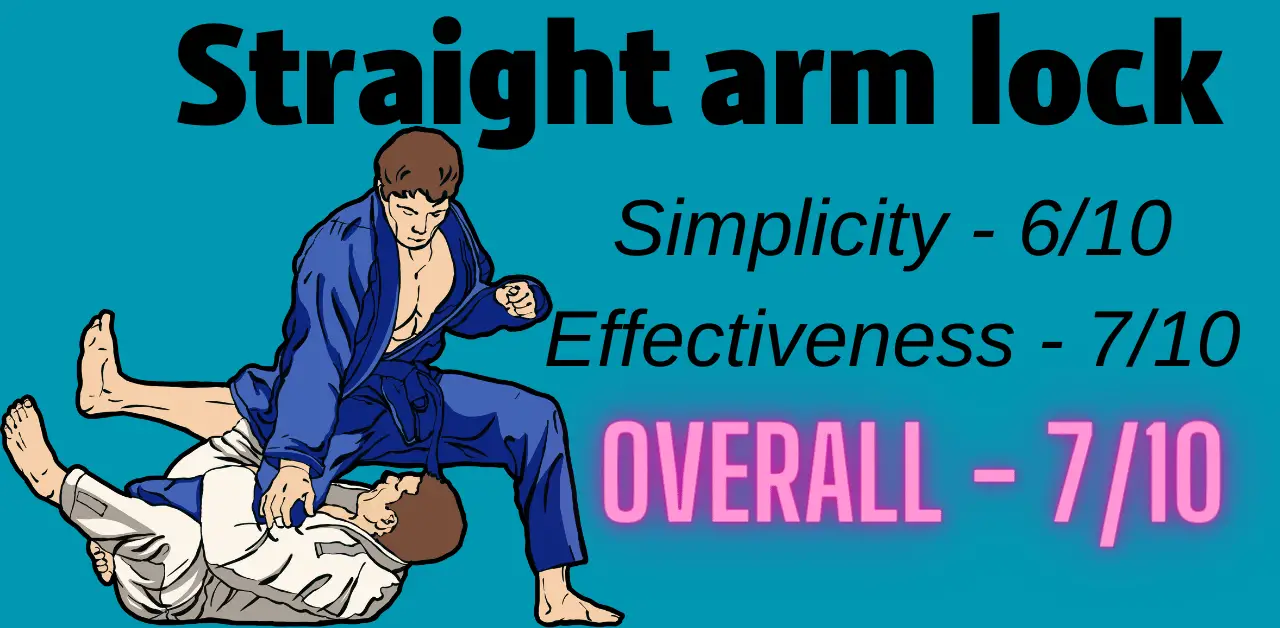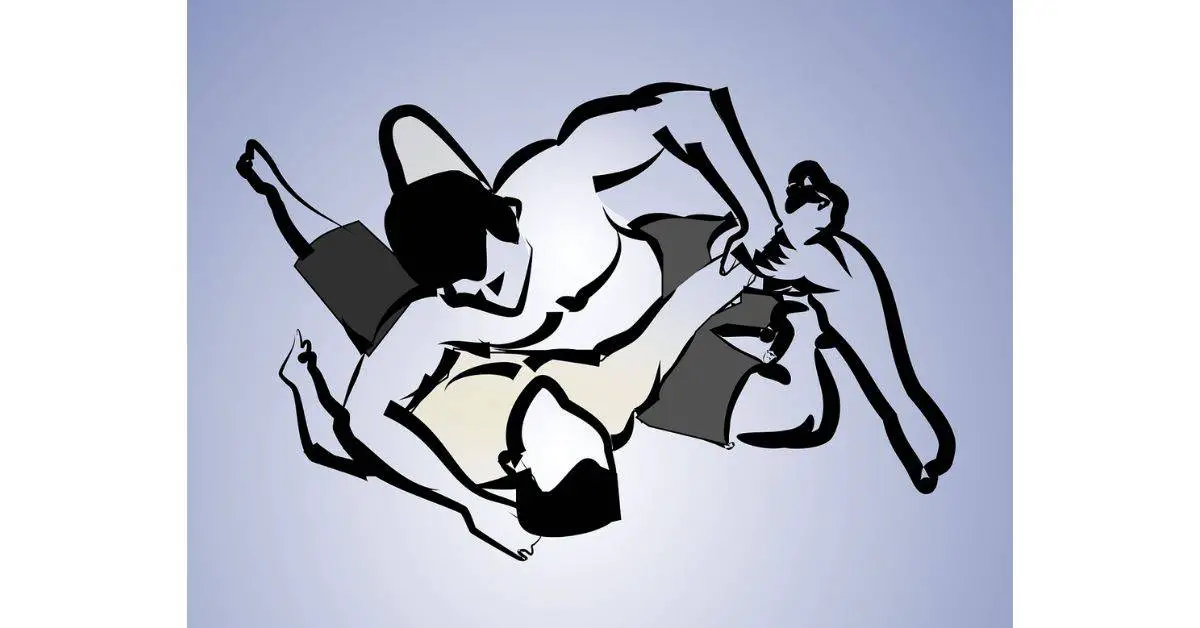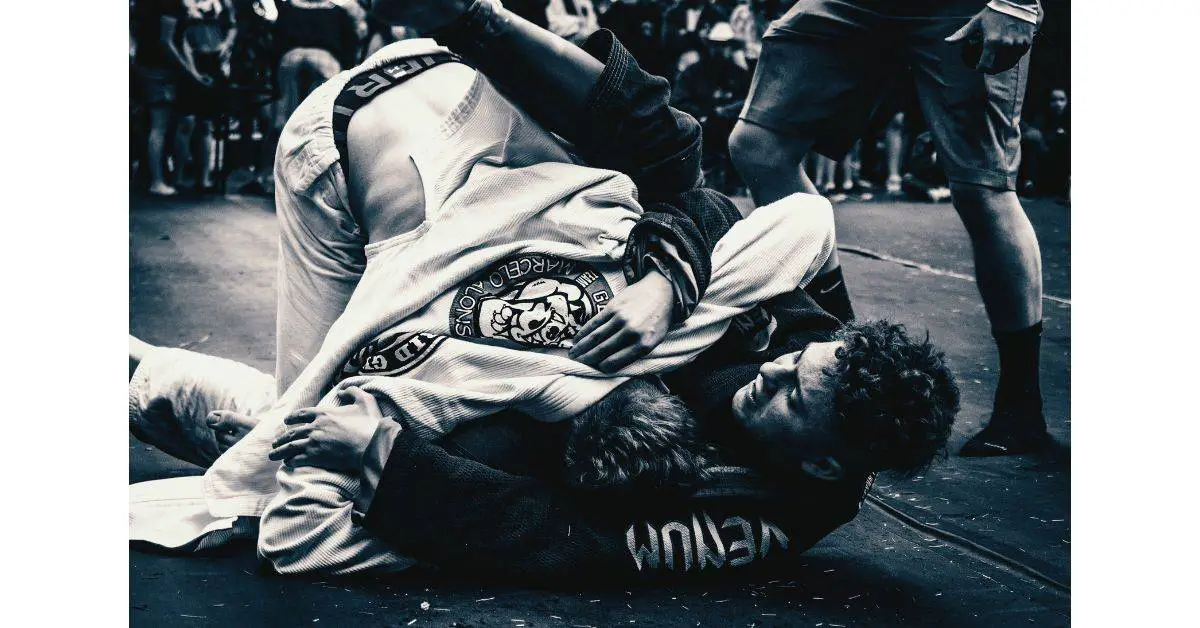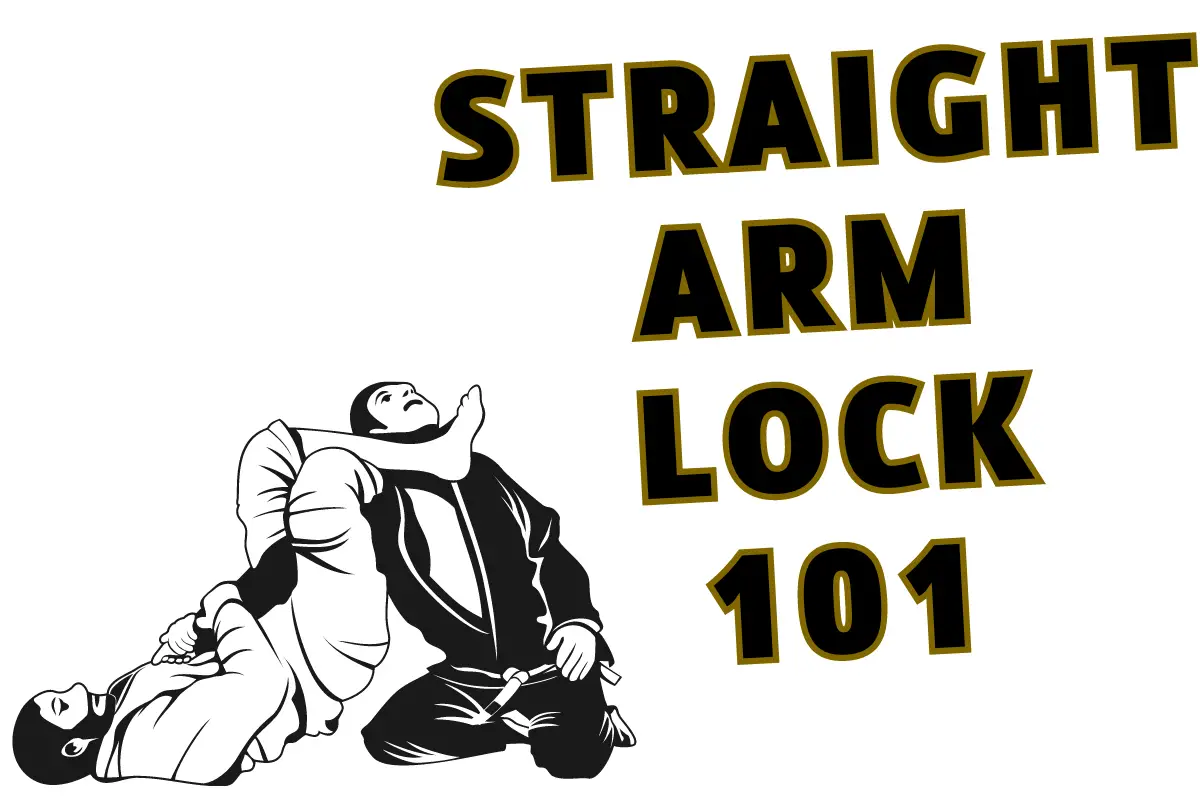The straight arm lock is one of BJJ’s signature moves. You might be familiar with the Armbar already. The Armbar is one variation of this wonderful set of techniques.
The straight arm lock refers to a wide set of submissions you can perform in many variations, such as while in the mount, closed guard, and even standing up. It utilizes pressure on the opponent’s arm while it’s straight. The pressure is applied downward to overextend the arm, which is more than painful.
One of the most difficult experiences in my BJJ training was mastering the straight arm lock, as it can be difficult to perfect the small details. That’s why I have decided to write this article.
If you can perfect the straight arm lock, you’ll increase your chances of winning more fights and rolls. Nevertheless, perfecting these mistakes isn’t as hard as one might think. Instead, you can do so with just a bit of practice and skyrocket your BJJ skills.
This article will explain the fundamentals of the straight arm lock and ensure you know the common mistakes most novice and even advanced grapplers make. Fixing these isn’t hard and will reap great results. So, stay tuned for that!

Before we dive into the article – if you want to learn another simple yet highly effective BJJ submission, follow the link to learn about the wrist lock and what makes it so practical. Read both guides to become a better grappler.
What is a straight arm lock?
Think about how painful overextending the arm can be. BJJ utilizes such pain points and overextensions to force the opponent to submit. That’s the entire point of grappling. Let’s examine a signature submission that teaches that hyperextends the arm while being straight.
The straight arm lock is a set of submissions that BJJ teaches. It utilizes downward pressure on the arm to hyperextend it and force the opponent to tap out. It has different variations, such as the mounted straight arm lock and even from a standing position. You can use this submission both in training and in real life.

Think how painful hyperextending the arm can be. The opponent will be in immense pain if you perform this technique correctly.
The straight arm lock and the Armbar can be confused together. However, it’s quite simple. You’ll typically notice that the mounted straight arm lock is the same execution as the Armbar.
From that, we can understand that the straight arm lock is a variation of the Armbar. Eventually, both utilize the same hyperextension but differ at their core. Make sure not to confuse the two.
If you want to learn about the Triangle choke and how to perform it correctly, make sure to follow the link to learn about it and start winning more fights.
How to perform the straight arm lock
The straight arm lock is one of the fundamental moves in BJJ and MMA. You want to learn it as soon as possible in your training if you desire to start grabbing your first wins. This section will discuss a basic variation you can learn first to have a solid grasp of this submission.
You first want to encircle the hand you’re attacking to perform the straight arm lock from the mount position. Next, go for the S-mount (with your legs.) Next, lean toward his feet and move your foot to parallel your other foot. Hug his hand and lean backward. Apply pressure and wait for the tap.
You want to ensure you don’t grab his hands but hug them. You might lose your advantage if you grab his hands and start arm wrestling with him.
Instead, you want to hug his hands. This is one of these details you must remember to master the straight arm lock to increase the chances of performing the straight arm lock perfectly.
Another detail you must perfect is to have a double grip once you lean backward. You don’t want to have a one-handed or no grip. You must double grip once you’re in the finishing position to ensure perfect execution.
This variation is called the Armbar. I did write a complete guide to the Armbar, so make sure to read it if you want to master this variation from all possible positions.
A step-by-step guide to performing the straight arm lock
This section will go into much more detail about performing the straight arm lock from the guard position.
Step #1 – Establish the guard
Start by pulling your opponent into your closed guard. With your legs wrapped around your opponent’s waist, use your feet to control your hips and keep them close to you.
Step #2 – Secure the position
You must control one of your opponent’s arms to set up the straight arm lock. Reach across their body with one of your arms and grab their opposite wrist, pulling it towards your chest. Use your other arm to control their triceps and keep their arm pinned to your chest.
Step #3 – Position your body
Angle your body towards the arm you’re controlling, creating space between your opponent’s elbow and their body. This will help you isolate the arm and make it easier to apply the submission.
Step #4 – Apply the lock
With your opponent’s arm isolated, use your free hand to grab your own wrist, creating a figure-four grip. This grip will allow you to apply leverage to your opponent’s shoulder. Use your hips to lift your opponent’s arm towards their head while pulling down on their wrist with your figure-four grip.
This will create a twisting motion that places pressure on their shoulder joint, forcing them to tap out.
Step #5 – Finish the submission
Once your opponent taps out, release the pressure and let go of their arm. You can then transition to a more dominant position, such as a mount or side control, to continue your attack if the roll continues.

Variations of the straight arm lock
This section will be all about how to perform the straight arm lock in all its 4 variations.
As you can imagine, different Jiu-Jitsu schools will teach different approaches to this submission. If you want to, you can learn many and choose your favorite. However, I would always recommend following your school, as you can get the most realistic practice there.
That said, keeping your eyes open for this submission’s many variations will be best. Do so with all other techniques, and you’ll become a knowledgeable, capable grappler.
Let’s begin with the mounted variation.
Mounted straight arm lock
You first want to begin by getting into a solid mount position. You want the opponent to commit as much as possible to the position.
This usually looks like your opponent is trying to bench-press you. You’re in an excellent position if you notice your opponent touching your chest and trying to lift you up. What you want to do now is make a swimming motion and escape his hold. You’ll then be in a lower position, getting you the advantage.
Once you’re in a low-mount position, you want to encircle the opponent’s hand (the one you want to attack). Then, you shift into an S-mount, shifting your weight to his legs. You then slowly release your other leg and cover his head. Finally, you lean backward (while double gripping his wrist) and apply pressure.
This is how you execute the straight arm lock from the mount position.
Now, before we move on, I want to emphasize how effective this submission can be. You don’t want to hurt your opponent because you didn’t pay attention.
Once the submission is ready to execute, you want to pay close attention to the opponent. Slowly apply pressure on the opponent’s shoulder joint; It’ll be better if you don’t apply a lot of pressure simultaneously. Rather, if you have the submission ready, slowly apply pressure backward until you feel the tap.
If you’re having trouble passing your opponent’s guard, listen up. I wrote an article on how to pass anyone’s guard using the Toreando pass; follow the link to learn how you can do it as well!
Straight arm lock from side control
This variation is definitely harder to learn, as it’s less intuitive than the rest. However, you want to learn it because it’s a dynamic attack you can use whenever you’re in side control.
The first thing you want to do is gain side control. You can do that in many ways, which we won’t look at now.
You want to wrap the opponent’s arm right by the elbow. Then, you turn and lean, making his arm straight. You then want to grab his wrist with your other hand (like the grip you have in a Kimura.) The only step left is to apply pressure downward (and not to the side.) Wait for the tap and release the pressure.
If you want to learn more about the Kimura to ensure you understand this variation, I have another complete guide on the Kimura; make sure to check it out by following the link!
A ninja tip is to have your hip over the opponent’s second arm when you lean over. That will prevent any trouble with your side control. That’s especially true if you’re up against a stronger person and don’t want them to lift you up easily with his hand.
Straight arm lock from closed guard
This article section will examine a simpler way of performing the straight Armbar from the guard position. Although it’s a traditional move, it’s highly effective, especially if you’re a novice trainee. But it can also be applied in the more advanced leagues. This is how you perform the straight arm lock from closed guard:
You first want to be in your guard position. Next, encircle the opponent’s hand (the one you want to attack) and have a solid grip. Pull the hand toward you and lean back. Finally, lean to the side with your hips and move your leg above his back. Finally, apply pressure on the shoulder joint and wait for the tap.
This, at least in my eyes, is the simplest straight arm lock variation you’ll see. That’s why I encourage every white belt reading this article to learn it first.
And again, don’t forget that it’s a highly effective technique. So, use it with caution when you apply pressure. Don’t go all at once but apply pressure slowly until the opponent taps.
One ninja tip is not to have his hand on your chest after applying pressure. You have to have some space for the submission to work properly. It’ll be best if you put it on your shoulder or neck.
Standing straight arm lock
You’ll see this variation less, especially if you’re training BJJ. This is more applicable to law enforcement personnel and to self-defense. You don’t want to use this variation unless you’re in a dangerous self-defense situation. Don’t even bother trying it in Jiu-Jitsu.
I’ll keep this section short, as it’s not as relevant to BJJ and grappling.
To perform the standing arm lock, you want to encircle the opponent’s hand (around his triceps.) You then want to bring his hand in front of his face and make the biggest circle you can toward his back. Don’t go any further when you see the opponent falling backward, or you’ll pop his shoulder joint.
I recommend avoiding the standing arm lock unless you’re a self-defense expert. But again, one of the goals of this article is to broaden your viewpoint and make you more aware of the many techniques that exist in this world.
I hope you have enjoyed this part of the article; its goal was to make you aware of all the variations the straight arm lock has.
And, if you want to learn another highly effective BJJ submission, follow the link to learn about the rear naked choke and why it’s perhaps the best BJJ submission!
Which martial arts teach the straight arm lock?
The straight arm lock originates from Brazilian Jiu-Jitsu. However, many MMA fighters, even in the UFC, use it to submit their opponents. Its effectiveness and simplicity make it much more attractive to fighters from all martial arts, including Judo, Jiu-Jitsu, and other grappling-based martial arts.
Is the Armbar the same as the straight arm lock?
The Armbar is a specific straight arm lock variation utilizing pressure on the shoulder joint. There are many other Armbar variations; thus, it differs from the straight arm lock. Nonetheless, both utilize the same guidelines and apply pressure in the same spot, hyperextending the arm.
Is the straight arm lock an effective submission?
The straight arm lock is one of BJJ’s signature and most effective submissions. It applies high-pressure levels on the opponent’s joints. You’ll notice how people tap out quickly when you perform this submission on them. That’s because hyperextending the arm is extremely painful.
So, in short, the straight arm lock is extremely effective and applicable to real-life submissions. You can force anyone to tap out, whether in real life or in training.
Final words
This was a complete guide to the straight arm lock. I encourage you to keep learning and broadening your horizons to ensure you become a solid grappler.
Correctly executing this submission will make you a much more capable fighter. And, who knows? It might be how you finish your first fight and get your first win.
However, there’s something you need to know:
While the straight arm lock is a highly effective technique, it’s not the most effective one. If you want to learn about the absolute best BJJ submissions, you must learn to call yourself a grappler; follow the link!

